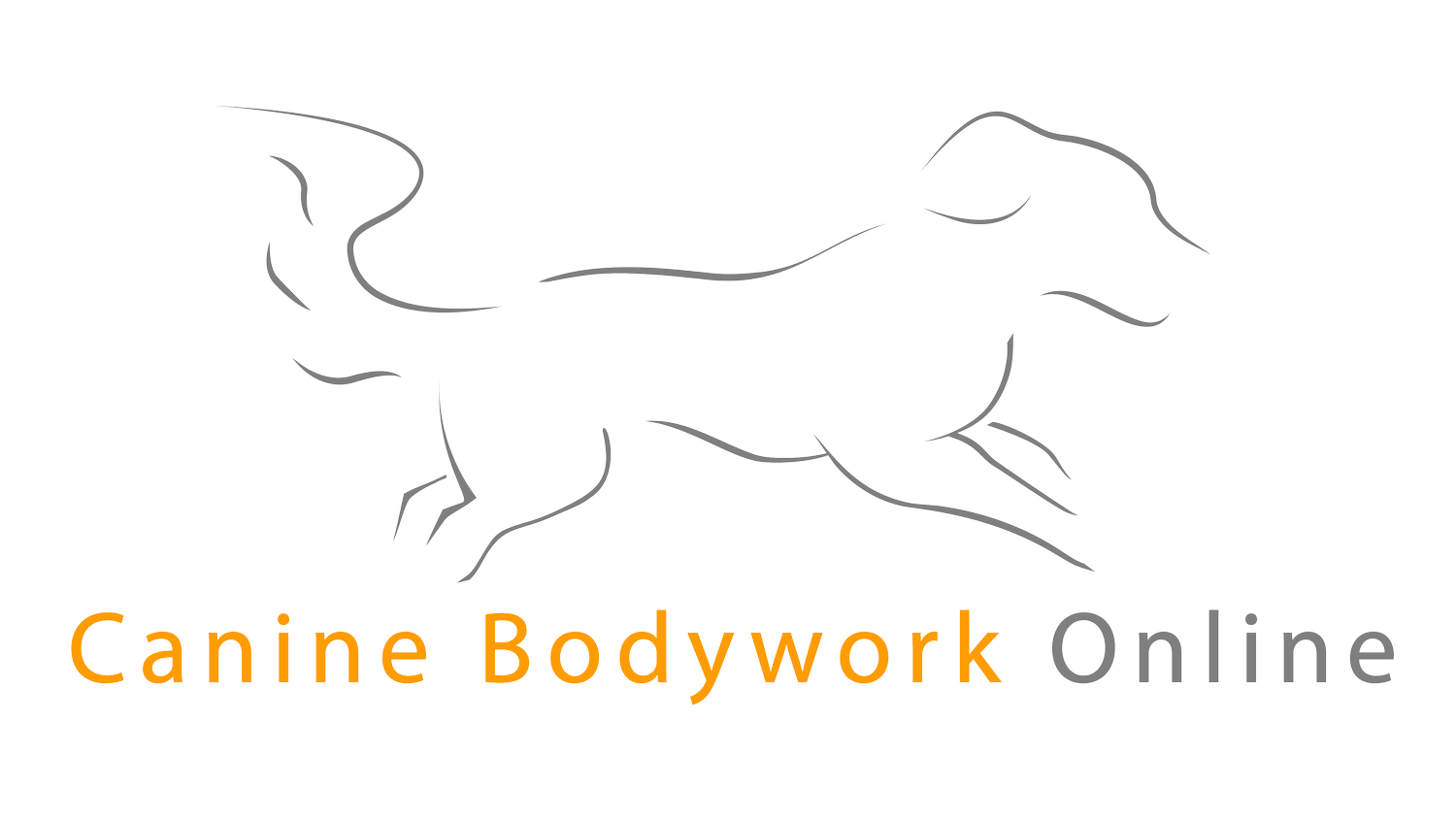Belly Rubs 2.0 — dog massage for the “Howlidays”
Canine Bodywork Online guides you through gentle techniques to get your dog’s digestive system back on track.
The holidays are all about fun, food, and family—including our four-legged friends! But when the treats start flowing, sometimes our pups can get into a little tummy trouble, especially during Halloween and Thanksgiving. With all the tempting sweets and table scraps, your dog might end up with a belly full of food they’re not supposed to have. No worries! Here’s how you can help with some soothing dog massage techniques to ease their discomfort.
Tummy troubles and holiday treats.
Dogs have a knack for finding that stray piece of candy or sneaking a turkey leg when no one’s looking. Unfortunately, rich, fatty foods or sugary snacks can lead to bloating, gas, and indigestion in our furry friends. Worse case scenario, dogs can develop debilitating pancreatitis from too much rich food or they can develop an obstruction anywhere along the length of their digestive tract from a bone or other object, either of which requires a trip to the veterinary clinic! If your dog is straining to urinate or defecate, you notice blood in their urine or stool, or they are lethargic and express pain when you touch their abdomen, reach out to your veterinarian immediately. More often, if your pup's just been a bit too adventurous with the holiday spread, a gentle belly massage can work wonders to provide comfort and help move things along.
How to give your dog a Belly Rub 2.0
First, make sure your dog is calm and relaxed, preferably in a familiar spot where they feel safe. Start with some slow, gentle strokes from head to tail along their back to soothe them (visit www.caninebodyworkonline.com for tutorial videos). Once they’re comfy, begin massaging the belly in slow, circular motions.You can think about making your circles clockwise around the bellybutton to move things along, or counter clockwise to slow things down a bit. Place your hand gently on their abdomen and use light pressure, moving in a clockwise direction—this follows the natural path of their digestive system and helps relieve gas and bloating. Massage gently around their ribs and down to their lower abdomen. Avoid pressing too hard; you’re aiming for comfort, not stress. You can also try gently stroking the sides of their tummy to stimulate digestion.
Symptoms to watch for and foods to avoid.
If your dog shows signs of distress, such as vomiting, diarrhea, lethargy, or a swollen belly, these could indicate something more serious. Foods like chocolate, raisins, grapes, onions, and anything sweetened with xylitol are highly toxic to dogs and should be kept out of reach. Rich, fatty foods like turkey skin, gravy, or buttery mashed potatoes can also upset their stomach and potentially cause pancreatitis, an inflammation of the pancreas that can be very painful and dangerous if left untreated.
Collecting a stool sample.
If your dog’s tummy troubles persist, your vet might ask for a stool sample to check for signs of illness. To collect it, use a plastic bag or a disposable glove to scoop up a fresh sample. Store it in an airtight container and refrigerate it until your vet visit. This can help the vet diagnose any underlying issues and get your dog back to their usual, happy self.
So this holiday season, enjoy the fun, but be mindful of what Fido gets into. And if the inevitable tummy troubles hit, you’ll be ready with some Belly Rubs 2.0!

